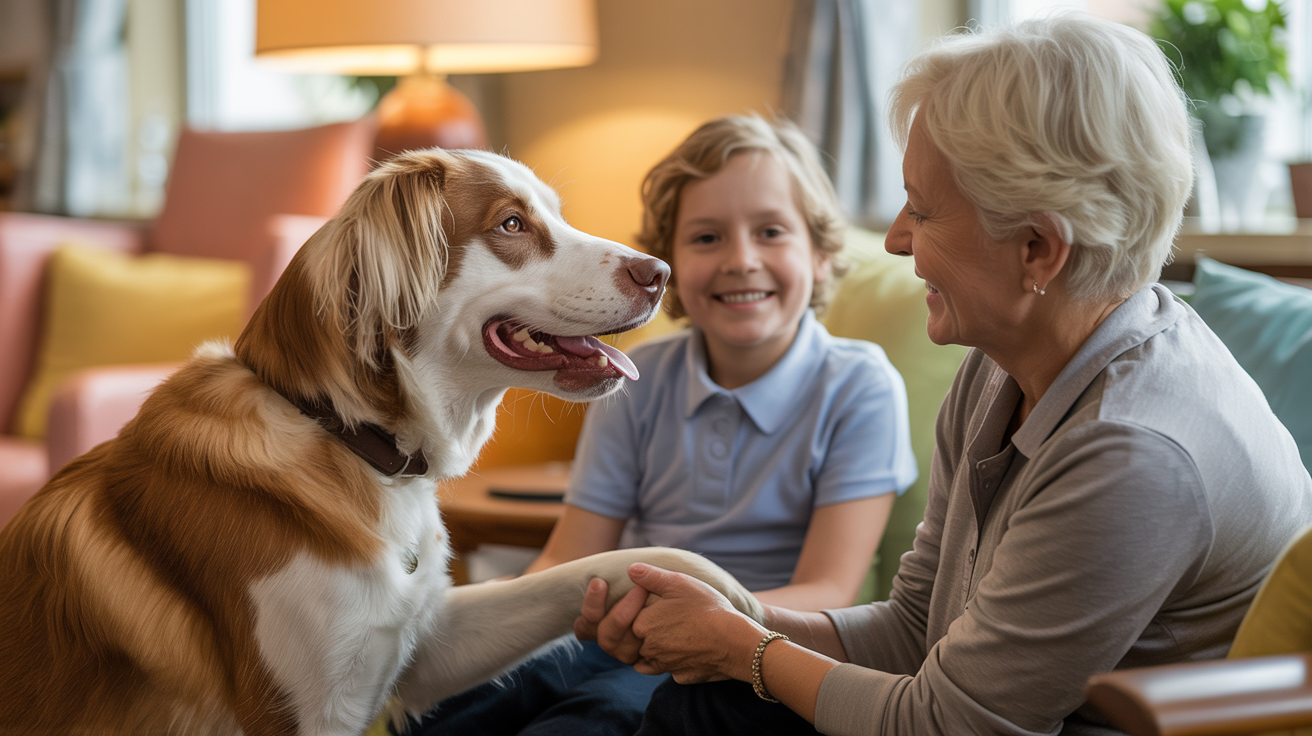Introduction: Unleashing the Power of Pets
For centuries, humans have shared their lives with domestic animals—whether as loyal dogs, calming cats, or gentle rabbits. But beyond companionship, a growing body of scientific research reveals that our furry friends have profound impacts on our physical and mental health. This therapeutic use of animals, known as animal-assisted therapy (AAT), is changing the way we approach healing and wellbeing.
What Is Animal-Assisted Therapy?
Animal-assisted therapy involves the guided interaction between individuals and trained animals, overseen by a healthcare or therapy professional. The goal is to support healing and improve quality of life. While AAT can include a variety of species, domestic pets—especially dogs and cats—are the most common companions in these settings.
The Science Behind the Bond
Why do animals have such a positive effect on us? The answer lies in biology and psychology:
- Hormonal Changes: Petting or interacting with pets releases oxytocin, the "love hormone," which reduces stress and promotes feelings of trust and relaxation.
- Lowered Cortisol: Studies show that time spent with animals can decrease cortisol, the hormone linked to stress.
- Heart Health: Regular interaction with pets can lower blood pressure, reduce cholesterol, and decrease the risk of heart disease.
- Social Support: Pets offer nonjudgmental companionship, which is particularly beneficial for individuals struggling with loneliness, anxiety, or depression.
"A 2019 review published in Frontiers in Psychology found that animal-assisted interventions significantly reduce symptoms of anxiety and depression in both children and adults."
How Animal-Assisted Therapy Works
Animal-assisted therapy takes many forms, depending on the needs of the individual:
- Therapy Dogs in Hospitals: Specially trained dogs visit patients to reduce anxiety, pain, and even blood pressure.
- Emotional Support Animals: Domestic pets provide daily comfort and stability to people coping with mental health conditions.
- Equine-Assisted Therapy: Horses help children with autism or veterans with PTSD develop confidence, communication, and emotional regulation.
Sessions are goal-oriented and supervised, ensuring the safety and wellbeing of both humans and animals.
Evidence-Based Benefits of Animal-Assisted Therapy
Numerous scientific studies have demonstrated the benefits of AAT:
- Reduced Anxiety and Depression: Therapy animals provide comfort and routine, helping to stabilize mood and lower levels of anxiety.
- Improved Social Skills: Children with developmental challenges often open up more easily with animals present, making therapy more effective.
- Enhanced Physical Recovery: Patients recovering from surgery or injury often report less pain and greater motivation to participate in rehabilitation when therapy animals are involved.
- Support for the Elderly: In care homes, therapy pets have been shown to reduce loneliness, increase physical activity, and even enhance memory recall in dementia patients.
Did you know? Pet owners have a 24% lower risk of death from any cause, according to a study in the journal Circulation (2019).
What Makes Domestic Pets Ideal for Therapy?
Not every animal is suited for therapy work. Domestic pets like dogs, cats, and rabbits are favored for several reasons:
- Calm Temperament: Therapy animals must be gentle, patient, and comfortable in a variety of environments.
- Trainability: Dogs and some other pets can be trained to respond to cues, follow routines, and provide specific support.
- Affectionate Nature: The natural tendency of these animals to bond with humans makes interactions more meaningful and effective.
Ethical Considerations and Animal Welfare
While AAT offers great benefits, it's crucial to ensure the wellbeing of therapy animals. Ethical guidelines require:
- Regular health checks and vaccinations
- Proper training and socialization
- Respect for the animal's comfort and boundaries
- Time off for rest and play
Organizations like Pet Partners and Therapy Dogs International set strict standards to safeguard animal welfare in therapy settings.
Future Directions: Expanding the Healing Power of Pets
As research continues, animal-assisted therapy is being integrated into more healthcare settings, including schools, mental health clinics, and even disaster response teams. Innovative programs are exploring the therapeutic potential of other domestic animals, like guinea pigs and birds, broadening the reach and impact of AAT.
Conclusion: Celebrating the Human-Animal Connection
The science is clear: domestic pets are more than just companions—they’re powerful allies in our journey toward better health and happiness. As animal-assisted therapy continues to evolve, it holds even greater promise for transforming lives, one wagging tail or gentle purr at a time.




